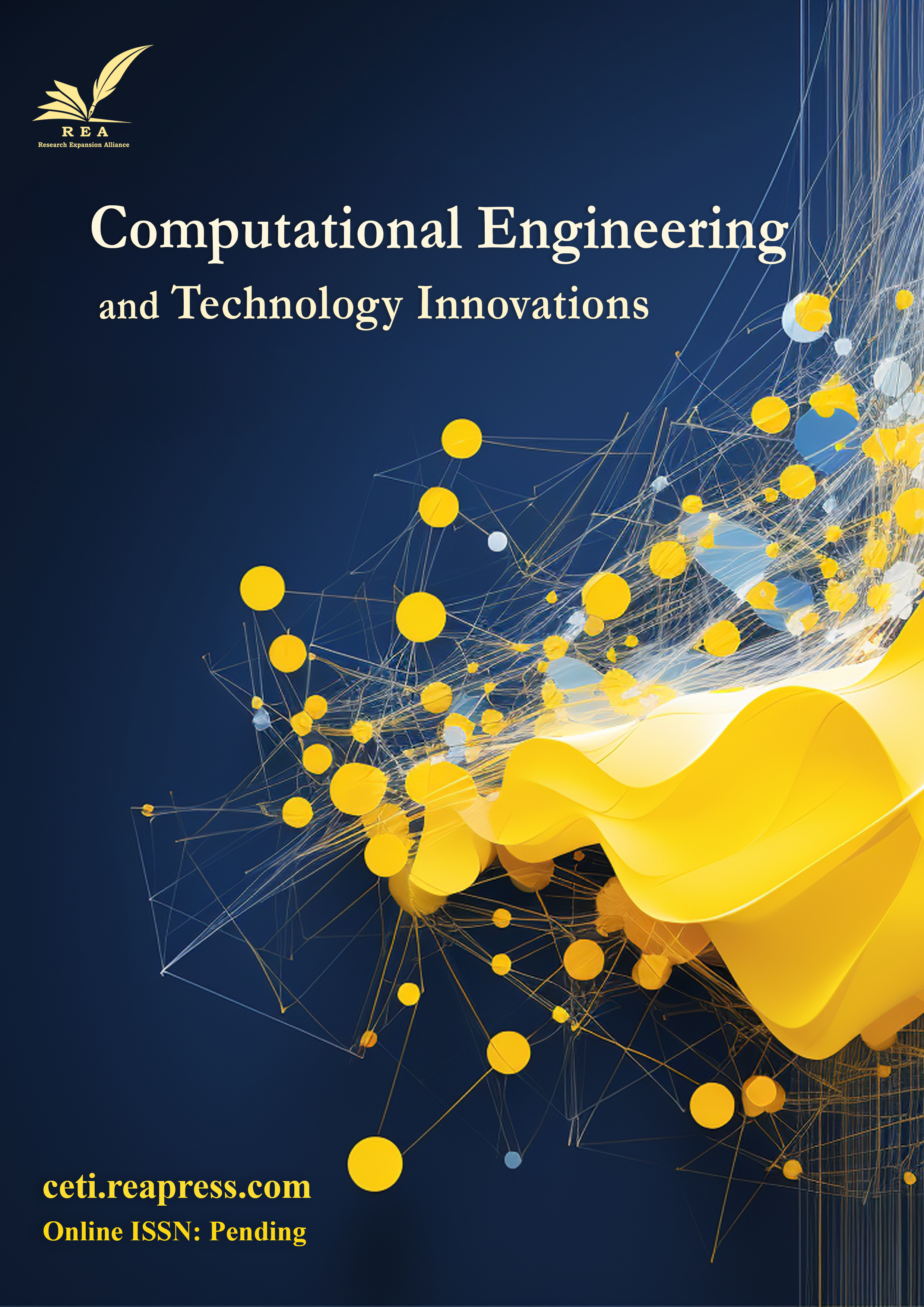The Golden Ticket Searching the Impossible Fractal Geometrical Parallels to solve the Millennium, P vs. NP Open Problem
Abstract
The two major unresolved issues in current mathematics and computer science addressed in this paper are fractal geometry and the P vs. NP problem. Benoît Mandelbrot's pioneering work in fractal geometry provides a mathematical basis for comprehending the complex, self-similar forms common in nature defined by non-integer dimensions. Its uses range from computer graphics to erratic systems across several spheres. On the other hand, the P versus A Millennium Prize Problem, NP problem answers the basic question of whether issues with quickly verifiable answers may also be effectively resolved. Emphasizing their status as important frontiers of knowledge, this article explores the basic ideas of both fields, their current knowledge, and the severe consequences their eventual resolution would have on scientific investigation and technology development.
Keywords:
Fractal geometry, the P vs. NP problemReferences
- [1] Kyritsis, K.E., 2023. The Simplest Possible Fully Correct Solution of the Clay Millennium Problem about P vs. NP. A Simple Proof That P≠ NP= EXPTIME. Journal of Computer and Communications, 11(8), pp.181-194.
- [2] Vega, F., 2024. Note for the Millennium Prize Problems.
- [3] Mageed, I.A., 2024a. The Fractal Dimension Theory of Ismail's Third Entropy with Fractal Applications to CubeSat Technologies and Education. Complexity Analysis and Applications, 1(1), pp.66-78.
- [4] Mageed, I.A., 2024b. Fractal Dimension of the Generalized Z-Entropy of The Rényian Formalism of Stable Queue with Some Potential Applications of Fractal Dimension to Big Data Analytics.
- [5] Mageed, I.A. and Bhat, A.H., 2022. Generalized Z-Entropy (Gze) and fractal dimensions. Appl. math, 16(5), pp.829-834.
- [6] Mageed, I.A. and Mohamed, M., 2023. Chromatin can speak Fractals: A review.
- [7] Husain, A., Nanda, M.N., Chowdary, M.S. and Sajid, M., 2022. Fractals: An eclectic survey, part II. Fractal and Fractional, 6(7), p.379.
- [8] Germain, S., Montage, S., Wiles, A. and Applewhite, D., 2023. Picture Credits. The Millennium Prize Problems, p.161.
- [9] Fraser, J.M., 2025. Applications of dimension interpolation to orthogonal projections. Research in the Mathematical Sciences, 12(1), p.10.
- [10] Mageed, I.A., 2025. Fractal Open Problems in Cancer Research, Medicine, Biomedicine, Clinical Sciences, and Dentistry. J of Clin Bio Med Adv, 4 (1), 01-09.
- [11] Mageed, I.A. and Bhat, A.H., 2024. Fractal Dimension of (q, β) Generalized Rényian Entropy, Rq with Potential Fractal Dimension Applications to Smart Cities. J Sen Net Data Comm, 4(2), pp.01-11.
- [12] Mageed, I.A., 2023a, November. Fractal Dimension (Df) of Ismail’s Fourth Entropy with Fractal Applications to Algorithms, Haptics, and Transportation. In 2023 international conference on computer and applications (ICCA) (pp. 1-6). IEEE.
- [13] Lancini, E., 2019. TDIness and multicuts (Doctoral dissertation, Université Paris-Nord-Paris XIII).
- [14] Troscheit, S., 2022. Fractal geometry. Course notes.
- [15] Strogatz, S.H., 2024. Nonlinear dynamics and chaos: with applications to physics, biology, chemistry, and engineering. Chapman and Hall/CRC.
- [16] Linton, O., 2021. Fractals. eBook Partnership.
- [17] Mageed, I.A., 2023b, November. Fractal Dimension (Df ) Theory of Ismail’s Second Entropy with Potential Fractal Applications to ChatGPT, Distributed Ledger Technologies (DLTs) and Image Processing (IP). In 2023 international conference on computer and applications (ICCA) (pp. 1-6). IEEE.
- [18] dos Anjos, P.H., Gomes-Filho, M.S., Alves, W.S., Azevedo, D.L. and Oliveira, F.A., 2021. The fractal geometry of growth: Fluctuation–dissipation theorem and hidden symmetry. Frontiers in Physics, 9, p.741590.
- [19] Bhat, A.H. and Mageed, I.A., 2023. Generalised Z-Entropy (Gze) and Fractal Dimensions (FDs). In Fractal Analysis-Applications and Updates. IntechOpen.
- [20] Mageed, I.A., 2024c. Fractal Dimension (Df) Theory of Ismail’s Entropy (IE) with Potential Df Applications to Structural Engineering. Journal of Intelligent Communication, 3(2), pp.111-123.
- [21] Oliveira, I.C., 2025. Meta-mathematics of computational complexity theory. arXiv preprint arXiv:2504.04416.
- [22] Mageed, I.A., 2024d. A Theory of Everything: When Information Geometry Meets the Generalized Brownian Motion and the Einsteinian Relativity. J Sen Net Data Comm, 4(2), pp.01-22.
- [23] Adolfi, F., Wareham, T. and van Rooij, I., 2022. Computational complexity of segmentation. arXiv preprint arXiv:2201.13106.
- [24] Chowdhary, K.R., 2025. NP-Completeness. In Theory of Computation: Automata, Formal Languages, Computation and Complexity (pp. 571-597). Singapore: Springer Nature Singapore.
- [25] Denning, P.J. and Tedre, M., 2021. Computational thinking: A disciplinary perspective. Informatics in Education, 20(3), p.361.
- [26] Okhmatovski, V. and Zheng, S., 2024. Theory and Computation of Electromagnetic Fields in Layered Media. John Wiley & Sons.
- [27] Cook, S.A., 2023. The complexity of theorem-proving procedures. In Logic, automata, and computational complexity: The works of Stephen A. Cook (pp. 143-152).
- [28] Hassan, S.M., Hussain, S. and Samad, A., 2024. Reducibility among NP-Hard graph problems and boundary classes. arXiv preprint arXiv:2411.14553.
- [29] Papadimitriou CH., 2003. Computational complexity. In Encyclopedia of computer science 2003 Jan 1 (pp. 260-265).
- [30] Anand, B.S., 2024. Why the classes P and NP are not well-defined finitarily. arXiv preprint arXiv:2401.09478.
- [31] Blum, L. and Blum, M., 2024. AI consciousness is inevitable: a theoretical computer science perspective. arXiv preprint arXiv:2403.17101.
- [32] Grabowska, A. and Gunia, A., 2024. On quantum computing for artificial superintelligence. European Journal for Philosophy of Science, 14(2), p.25.
- [33] MATYSIAK, L., 2021. Generalized RSA cipher and Diffie-Hellman protocol. Journal of applied mathematics & informatics, 39(1_2), pp.93-103.
- [34] Goldwasser, S., Micali, S. and Rivest, R.L., 2019. A" paradoxical" solution to the signature problem. In Providing Sound Foundations for Cryptography: On the Work of Shafi Goldwasser and Silvio Micali (pp. 265-284).
- [35] Facco, E. and Fracas, F., 2022. De Rerum (Incerta) Natura: A tentative approach to the concept of “quantum-like”. Symmetry, 14(3), p.480.
- [36] Bossaerts, P., Yadav, N. and Murawski, C., 2019. Uncertainty and computational complexity. Philosophical Transactions of the Royal Society B, 374(1766), p.20180138.
- [37] Sherry, Y. and Thompson, N.C., 2021. How fast do algorithms improve?[point of view]. Proceedings of the IEEE, 109(11), pp.1768-1777.


